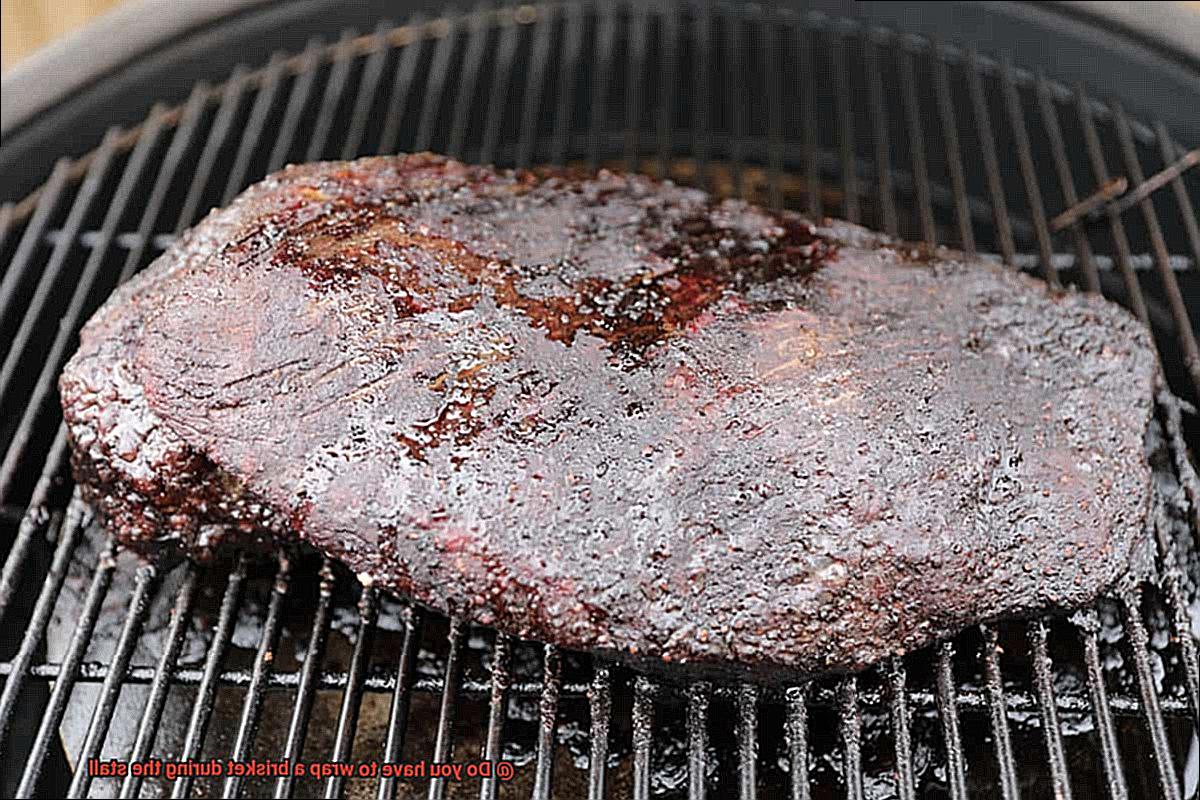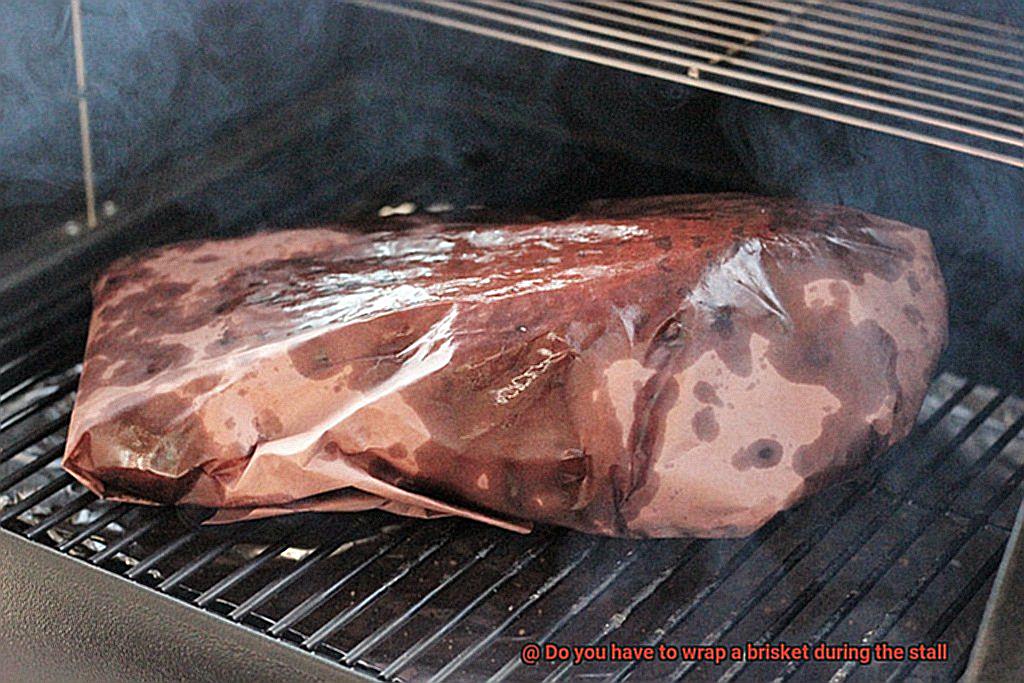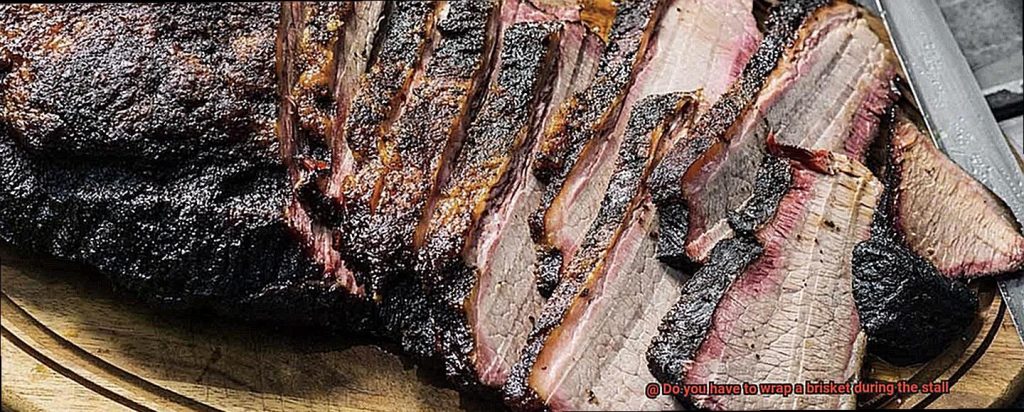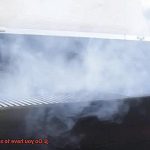Do you live for the smoky aroma of barbeque and relish in cooking up a storm for your loved ones? If so, you’ve likely pondered over the age-old question – do I need to wrap my brisket during the stall? The stall refers to a phase in the smoking process where the meat’s temperature plateaus and doesn’t seem to budge for hours on end, leaving even seasoned pitmasters scratching their heads.
The debate around wrapping your brisket during the stall is a hotly contested one. Some argue that wrapping helps retain moisture and yields a more tender final product. Others swear by leaving it unwrapped for better bark formation and an authentic smoke flavor.
In this post, we’ll dive into the nitty-gritty of whether or not to wrap your brisket during the stall. We’ll explore how moisture, smoke, and bark formation play into the cooking process and arm you with all the info you need to make an informed decision at your next cookout. So grab yourself a cold drink and settle in as we explore all things smoked meat and tackle this burning question head-on – to wrap or not to wrap?
Contents
What is the Stall?
While this can be frustrating for even the most experienced pitmasters, it’s an entirely normal part of smoking brisket.
The science behind the Stall lies in evaporative cooling. As moisture starts to evaporate from the meat, a barrier is created that prevents the internal temperature from rising until enough moisture has been released. This evaporation also causes a cooling effect that counteracts the heat from the smoker, resulting in a plateau in temperature.
But don’t worry. The Stall is not something to fear, and there are ways to work through it and still achieve mouth-watering brisket. For instance, wrapping your brisket during this period can help the meat retain its moisture and tenderness. However, some argue that wrapping can hinder the development of a good bark on the exterior of the meat and even steam the brisket, resulting in a less flavorful final product.
Ultimately, whether or not you wrap your brisket during the Stall is up to personal preference. Some use foil, butcher paper, or banana leaves to enclose their meat while others leave it unwrapped until the internal temperature rises again. It’s worth noting that wrapping isn’t necessary for successful brisket cookery, but it can be helpful for those who struggle with dry meat or want to speed up cooking times.
Pros and Cons of Wrapping a Brisket During the Stall
If you’re planning to smoke a brisket, you may find yourself facing the dreaded stall – that frustrating period during the cooking process where the temperature of the meat plateaus for hours on end. Luckily, there’s a solution: wrapping your brisket. However, as with any cooking method, there are pros and cons to this approach.
Wrapping your brisket during the stall has its advantages. One significant advantage is that it helps to retain moisture. By wrapping your brisket in foil or butcher paper, you can trap in moisture and prevent it from drying out during the long smoking process. This method also speeds up your cooking time by breaking through the stall more quickly. Additionally, it can promote a better bark by preventing any parts of the brisket from becoming too dry.

Nevertheless, there are also potential downsides to wrapping. Wrapping can lead to steaming because it creates a mini-oven inside the foil or paper. This can impact the texture and flavor of the meat negatively. Additionally, wrapping can soften the bark, which is not ideal for many pitmasters. It can also limit the amount of smoke that reaches the meat, impacting its overall flavor.
On the other hand, not wrapping your brisket allows for more air circulation around the meat, leading to a firmer bark overall. It also allows more smoke to penetrate the meat, resulting in a richer and smokier flavor. Without any wrapping, you don’t run the risk of creating steam inside the foil or paper.
However, not wrapping your brisket also comes with some potential drawbacks. The biggest risk is that it may dry out during the long smoking process without any protection from foil or paper. Additionally, without wrapping to break through the stall more quickly, your brisket may take longer to cook overall. Finally, achieving a consistent and even bark can be more challenging without wrapping since some parts of the meat may dry out more than others.
Different Methods of Wrapping a Brisket
Smoking a brisket is no easy feat, and when you hit that dreaded stall, it can be unnerving. But fear not, wrapping your brisket can be a real game-changer. Not only does it help to retain moisture, but it also speeds up cooking time and promotes a better bark. However, choosing the right wrapping method can be a daunting task since each method comes with its own set of advantages and disadvantages.
Let’s delve into the first method, using traditional butcher paper. This classic choice is popular among pitmasters because it allows for some airflow while still retaining moisture. It’s also easy to wrap and unwrap, making it a convenient option. However, maintaining proper wrapping technique with butcher paper can be challenging, leading to uneven cooking and dry meat.
Another widely used option is foil wrapping. Foil is perfect for those who want to keep as much moisture as possible in their brisket. It creates a tight seal around the meat, trapping in all of the juices. However, some experts caution against using foil because it can lead to steaming, which may affect the texture of the meat.
If you’re up for something new, give the peach butcher paper method a try. This innovative wrapping option has been gaining popularity in recent years. Peach paper is similar to traditional butcher paper but has a wax coating that prevents leakage and retains moisture. It also has a slightly different texture than traditional butcher paper that some people prefer. However, it may be more challenging to find and pricier than other wrapping options.
Ultimately, the choice of which wrapping method to use depends on personal preference and desired outcome. Experimenting with different methods is key until you find what works best for you. Remember that patience and practice are crucial in achieving the perfectly cooked brisket.
How to Know When to Wrap a Brisket During the Stall
The stall is a notorious phase in smoking a brisket. It can be disheartening as the internal temperature of the meat plateaus, sometimes for hours on end. Wrapping the brisket in foil or butcher paper can help push through the stall and speed up cooking time. However, some experts argue that wrapping can affect the texture and flavor of the meat.
Knowing when to wrap your brisket during the stall is crucial. It depends on personal preference and cooking style. Some pitmasters prefer to wrap immediately after placing the brisket on the smoker, while others wait until they reach a specific internal temperature.
One effective way to determine when to wrap is by monitoring the color and texture of the meat. Once the bark has formed and the meat has a rich mahogany color, it may be time to consider wrapping. Additionally, if you notice that the meat is drying out or becoming too dark, it may be time to wrap.
Another way to determine when to wrap is by monitoring the internal temperature of the brisket. Once it reaches around 160-170 degrees Fahrenheit, it may be time to wrap. This is because at this point, the meat has already absorbed a good amount of smoke flavor and wrapping will help prevent it from drying out.
Ultimately, whether or not to wrap a brisket during the stall is a personal decision. It’s important to experiment with different techniques and find what works best for you. Some pitmasters swear by wrapping, while others prefer to let their brisket cook unwrapped until it reaches its desired internal temperature. The key is to be patient and keep an eye on your meat as it cooks.
Wrapping your brisket during the stall can have its advantages
it helps maintain moisture levels and speeds up cooking time. However, it can also affect texture and flavor. Experimenting with different methods will help you find what works best for you and your taste preferences.

Tips for Wrapping a Brisket
Wrapping your brisket during the stall may be just the technique you need to push through and achieve a tender and juicy result. Here are five key tips for wrapping your brisket during the stall:
Choose the right wrapping material
The material you use for wrapping is crucial in determining the quality of your brisket. Foil, butcher paper, and peach paper are all popular options, but each has its advantages and disadvantages. Foil is great for retaining moisture, but can also steam the meat. Butcher paper is breathable and allows smoke to penetrate while keeping the meat moist. Peach paper is similar to butcher paper but has a wax coating that helps prevent leaks.
Wrap at the right time
Timing is everything when it comes to wrapping your brisket. Wrapping too early can result in a poorly formed bark, while wrapping too late can lead to a dry and tough brisket. The ideal time to wrap is when the internal temperature of the brisket reaches around 160-170°F.
Add moisture
Keeping your brisket moist is key to achieving a tender final product. Adding moisture to your wrap can help achieve this. Many pitmasters add liquid such as apple juice or beef broth before sealing the wrap.
Double-wrap for extra protection
If you’re using foil or butcher paper, double-wrapping can provide extra protection against leaks and tears. This ensures that your brisket stays moist and doesn’t lose flavor.
Don’t unwrap too soon
Letting your brisket rest after cooking is essential to allow juices to redistribute throughout the meat. It’s recommended to let your brisket rest wrapped in foil or butcher paper for at least 30 minutes before slicing.
Benefits of Not Wrapping a Brisket During the Stall
Brace yourself for the age-old debate on whether to wrap your brisket during the stall of the cooking process. While some swear by wrapping their meat in foil or butcher paper, there are compelling reasons why leaving it unwrapped is a smart move.
One of the most significant benefits of not wrapping your brisket during the stall is that it allows for better smoke penetration and bark development. As a seasoned BBQ aficionado, you know that the bark is one of the most critical components of a good brisket. By leaving it unwrapped, you give that beautiful crust a chance to form and become infused with smoky goodness.
Another benefit of not wrapping a brisket during the stall is that it results in a juicier final product. When you wrap your meat, you essentially trap in moisture and steam. While this can help speed up the cooking process, it can also result in an overly tender and mushy texture. By leaving it unwrapped, you allow some of that moisture to escape and create a firmer, more texturally pleasing end product.
Leaving your brisket unwrapped during the stall can also be a matter of convenience. Wrapping and unwrapping your meat can take time and effort, and there’s always a risk of tearing or leaking foil or paper. By leaving it unwrapped, you can simply let it cook until it reaches your desired internal temperature without any interruptions.
In summary, here are the key benefits of not wrapping your brisket during the stall:
- Better smoke penetration
- Thicker bark formation
- Juicier texture
- Convenience
The Bottom Line: To Wrap or Not to Wrap?
Let’s start with the science behind the stall. This frustrating phenomenon occurs when the internal temperature of the meat plateaus and can remain stagnant for hours. But fear not, wrapping your brisket can help push through the stall by trapping in moisture and heat, ultimately resulting in a faster cook time.
However, some pitmasters argue that wrapping can lead to a softer bark and less smoky flavor. If you’re a traditionalist who prefers a firmer bark and a smokier flavor, then skipping the wrap may be the way to go.
On the other hand, if you’re short on time or want a juicier end result, then wrapping can be an effective solution. The barrier created by the wrap helps keep the moisture in, resulting in a tender and succulent brisket.
But wrapping is just one technique among many when it comes to cooking a perfect brisket. Here are some other factors to consider:
- Wood choice: Different woods impart different flavors, so choose wisely.
- Rubs: Experiment with different rubs to find the perfect balance of flavors.
- Temperature control: Consistency is key to achieving that perfect brisket.
- Rest time: Letting your brisket rest before slicing allows the juices to redistribute, resulting in a more flavorful and tender end product.
Ultimately, whether to wrap or not to wrap comes down to personal preference and cooking style. Experimenting with different methods is key to finding what works best for you and your taste preferences. And regardless of your choice, patience and attention to detail are crucial when it comes to achieving mouthwatering, tender brisket.
P3uxKyshonE” >
Conclusion
In conclusion, the age-old debate of whether to wrap a brisket during the stall is one that has pitmasters divided. The stall, which is a normal part of smoking a brisket, occurs when the internal temperature plateaus for hours on end. While some believe that wrapping your brisket during this period can help retain moisture and tenderness, others argue that it can hinder bark formation and smoky flavor.
There are pros and cons to both wrapping and leaving your brisket unwrapped during the stall. Wrapping helps retain moisture, speeds up cooking time, and promotes better bark formation. However, it can also lead to steaming, soften the bark, and limit smoke penetration.
Choosing the right wrapping material is crucial in achieving your desired outcome. Foil, butcher paper, and peach paper are all popular options among pitmasters.
Knowing when to wrap your brisket depends on monitoring color and texture as well as internal temperature. Achieving perfectly cooked brisket requires patience and practice.
Leaving your brisket unwrapped during the stall has its benefits too. It allows for better smoke penetration, thicker bark formation, juicier texture, and convenience.
Ultimately, whether to wrap or not to wrap comes down to personal preference and cooking style. Experimenting with different methods is key to finding what works best for you.






